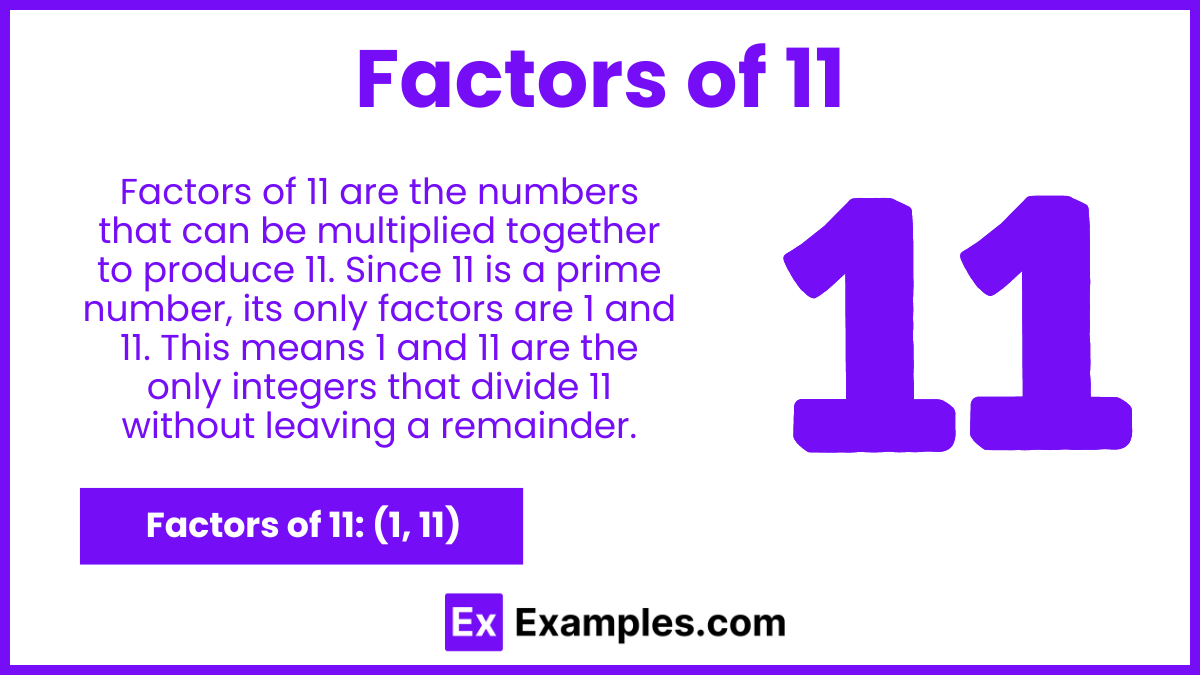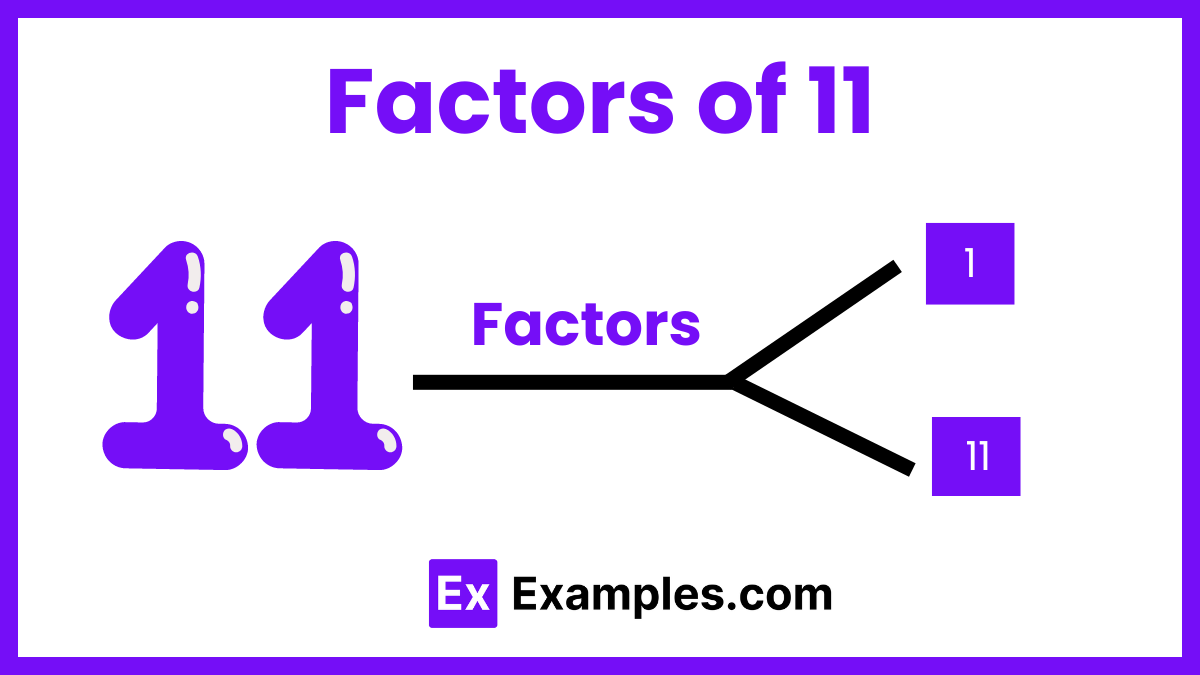What are the factors of 11?
1, 11
1, 2, 11
1, 3, 11
1, 5, 11

The factors of the number 11 are quite straightforward because 11 is a prime number. In mathematics, a prime number is defined as a natural number greater than 1 that has no positive divisors other than 1 and itself. Therefore, the only factors of 11 are 1 and 11. This attribute of having exactly two distinct positive divisors is unique to prime numbers. The concept of prime numbers is fundamental in various branches of mathematics, including number theory and cryptography, where the properties of primes are used to secure digital communications. Understanding the factors of 11 helps in grasping the basics of prime factorization, which is essential for higher mathematical computations and theorems.

The factors of 11 are 1 and 11. This makes 11 a prime number, defined as having only two distinct positive divisors: itself and 1. Prime numbers like 11 are essential in mathematics, particularly in fields such as number theory and cryptography. Their unique properties allow them to be used in algorithms that underpin security and data encryption techniques. Understanding the factors of prime numbers helps in developing computational methods and in the teaching of basic arithmetic concepts.
Recognize that a prime number is one that has only two distinct positive divisors: 1 and itself. This means it can only be divided evenly by 1 and the number itself without leaving a remainder.
Start testing divisibility from the smallest prime number, which is 2, and move up. However, 11 is an odd number and clearly not divisible by 2.
Check divisibility by subsequent prime numbers (3, 5, 7, etc.). For 11, you will find that it is not divisible by any prime numbers up to its square root (approximately 3.316). The square root check is a quick way to limit the numbers you need to test for divisibility.
Since 11 is not divisible by any primes less than itself and it is greater than 1, it is confirmed as a prime number. Therefore, the only prime factors of 11 are 11 itself and 1 by definition.
When it comes to determining the factors of 11, the task is quite simple since 11 is a prime number. Here are some tips that can help you not only confirm that 11 is prime but also understand factorization better:
Since 11 is a prime number, by definition, prime numbers have exactly two distinct positive divisors: 1 and themselves. This is what makes them prime.
Factors of 11 are numbers that divide 11 without leaving a remainder (1 and 11), while multiples of 11 are the results of multiplying 11 by an integer (e.g., 11, 22, 33, etc.).
Yes, knowing that 11 is a factor can help simplify fractions where the numerator or denominator includes the number 11 by reducing the fraction through division by 11 when possible.
In prime factorization, 11 as a factor indicates that the number being factorized is either 11 itself or a multiple of 11, simplifying the process of breaking down numbers into their prime components.
The positive and negative pair factors of 11 are (1, 11) and (-1, -11). This reflects that 11 is prime and only divisible by 1 and itself, with each having a corresponding negative pair that also satisfies the factorization.
The sum of factors of 11, considering only the positive factors, is 12 (1 + 11). This includes all the numbers that can divide 11 evenly, which are just 1 and 11.
The Greatest Common Factor (GCF) of 11 and 4 is 1. Since 11 is a prime number and 4 lacks the factor 11, the only common factor between the two is 1.
Text prompt
Add Tone
10 Examples of Public speaking
20 Examples of Gas lighting
What are the factors of 11?
1, 11
1, 2, 11
1, 3, 11
1, 5, 11
Which factor of 11 is also a factor of 1?
1
11
2
3
Which number is a factor of 11?
10
11
12
13
If a number is divisible by 11, which of the following must be true?
The number is divisible by 1.
The number is divisible by 11.
The number is divisible by 2.
The number is divisible by 5.
Which of the following is not a factor of 11?
1
2
11
22
What is the result of multiplying all factors of 11 together?
11
121
1
0
If you divide 11 by which number will you get a factor of 11?
11
12
1
2
Which of these numbers is not a factor of 11?
1
11
2
3
What can you say about the factors of 11?
They are all even.
They are all odd.
They are all prime.
They include 2.
What is the highest number less than 11 that is a factor of 11?
10
5
3
1
Before you leave, take our quick quiz to enhance your learning!

